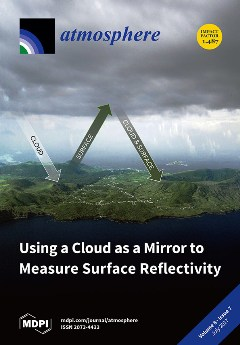This study examined the model-derived and observed ozone production efficiency (OPE = ∆O
x/∆NO
z) in one rural location, Pinnacle State Park (PSP) in Addison, New York (NY), and one urban location, Queens College (QC) in Flushing, NY, in New York
[...] Read more.
This study examined the model-derived and observed ozone production efficiency (OPE = ∆O
x/∆NO
z) in one rural location, Pinnacle State Park (PSP) in Addison, New York (NY), and one urban location, Queens College (QC) in Flushing, NY, in New York State (NYS) during photo-chemically productive hours (11 a.m.–4 p.m. Eastern Standard Time (EST)) in summer 2016. Measurement data and model predictions from National Oceanic and Atmospheric Administration National Air Quality Forecast Capability (NOAA NAQFC)—Community Multiscale Air Quality (CMAQ) model versions 4.6 (v4.6) and 5.0.2 (v5.0.2) were used to assess the OPE at both sites. CMAQ-predicted and observed OPEs were often in poor agreement at PSP and in reasonable agreement at QC, with model-predicted and observed OPEs, ranging from approximately 5–11 and 10–13, respectively, at PSP; and 4–7 and 6–8, respectively, at QC. The observed relationship between OPE and oxides of nitrogen (NO
x) was studied at PSP to examine where the OPE downturn may have occurred. Summer 2016 observations at PSP did not reveal a distinct OPE downturn, but they did indicate that the OPE at PSP remained high (10 or greater) regardless of the [NO
x] level. The observed OPEs at QC were found by using species-specific reactive odd nitrogen (NO
y) instruments and an estimated value for nitrogen dioxide (NO
2), since observed OPEs determined using non-specific NO
x and NO
y instruments yielded observed OPE results that (1) varied from approximately 11–25, (2) sometimes had negative [NO
z] concentrations, and (3) were inconsistent with CMAQ-predicted OPE. This difference in observed OPEs at QC depending on the suite of instruments used suggests that species-specific NO
x and NO
y instruments may be needed to obtain reliable urban OPEs.
Full article





